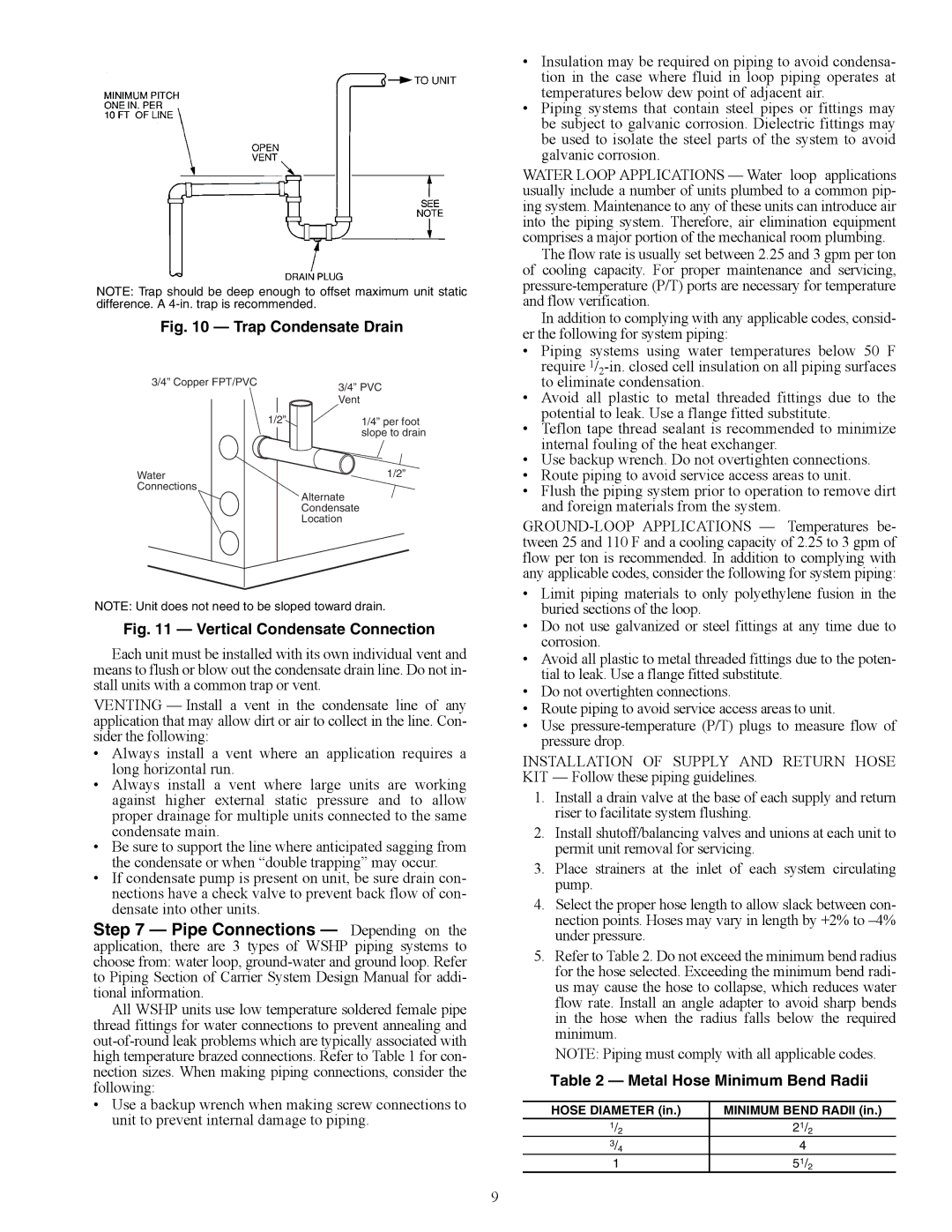50PCH specifications
The Carrier 50PCH is a cutting-edge series of air-cooled chillers designed to deliver exceptional cooling performance in a wide range of commercial applications. Engineered with efficiency and reliability in mind, the 50PCH stands out for its innovative technologies and robust construction, making it a preferred choice for facility managers and HVAC professionals.One of the main features of the Carrier 50PCH is its advanced scroll compressor technology. This system consists of high-efficiency scroll compressors that optimize energy consumption while maintaining consistent cooling output. The incorporation of variable speed technology enables the chillers to adapt to fluctuating load demands, resulting in significant energy savings and reduced operational costs.
The 50PCH chillers also boast a high energy efficiency ratio (EER) and coefficient of performance (COP), ensuring compliance with stringent energy regulations and standards. They are designed with eco-friendly refrigerants, which contribute to lower greenhouse gas emissions, making them an environmentally responsible choice for modern buildings.
In addition to its energy-efficient operation, the 50PCH series is equipped with advanced controls that allow for seamless integration into building management systems. The intuitive interface facilitates monitoring and adjustment of set points, ensuring optimal comfort conditions. Furthermore, the chillers come with extensive diagnostic capabilities, enabling proactive maintenance and reducing the risk of unexpected downtime.
The robust construction of the 50PCH series enhances durability and reliability. With an all-weather aluminum cabinet, these chillers are designed to withstand harsh environmental conditions, ensuring long-term performance. The units undergo rigorous testing to meet high industry standards for quality and reliability.
Another distinguishing characteristic of the Carrier 50PCH is its whisper-quiet operation. Engineered for low sound levels, these chillers minimize noise pollution in sensitive environments, such as hospitals, schools, or residential areas.
In summary, the Carrier 50PCH series combines exceptional performance, energy efficiency, and innovative technology in a robust and reliable package. It highlights the best in modern HVAC design, making it an ideal solution for a wide array of climate control needs in commercial and institutional settings. With its advanced features and commitment to sustainability, the 50PCH is undoubtedly a leader in the air-cooled chiller market.

